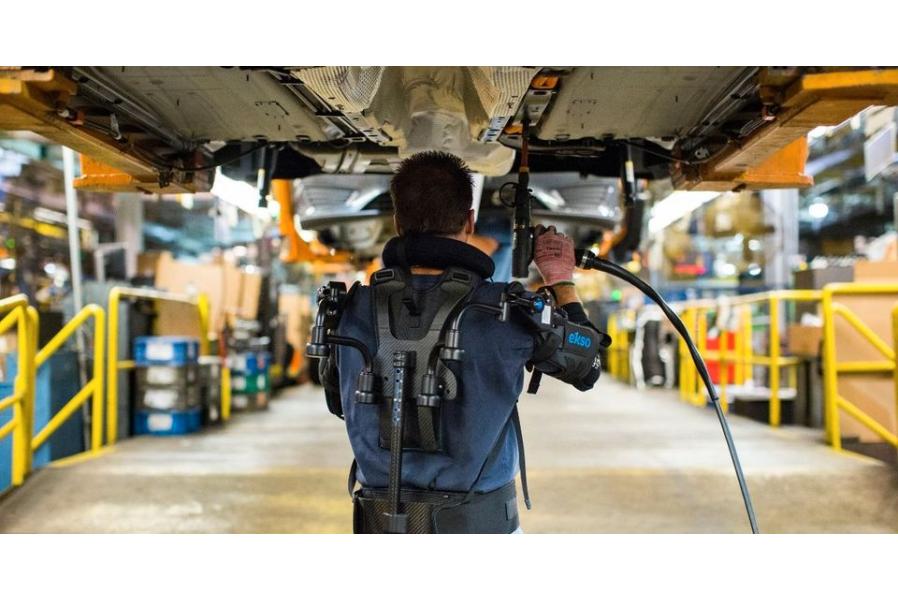Blog Posts

An Inside Look At How Ford And GM Build Their Cars (16 Pictures)
An Inside Look At How Ford And GM Build Their Cars (16 Pictures)
Ford and GM forged innovations to forever change the way we build cars. Here's an inside look at how they influenced the entire auto industry.
- April 1, 2020
Following their humble beginnings in 1903 and 1908, respectively, the Ford Motor Company and General Motors have forged innovations in technology and logistics that have greatly influenced the entire auto industry.
The work involved in vehicle production has progressed from grueling manual labor to more synergistic, sophisticated methods. Incorporating technological advancements in robotics and automation has allowed companies to ramp up their production rates while decreasing worker fatigue from repetitive and strenuous tasks.
In an industry bound to standards and quality control, the ultimate goal is to create the ideal machine for consumers, balancing comfort and safety with performance. In the words of Chevrolet co-founder Louis Chevrolet, “Movement is the universal language of personal freedom”.
Below are 16 of the many inner workings of how Ford and GM create their cars, building on principles of their original founders to become leaders in the automotive industry.
16 Pioneers Of Lean Manufacturing
Lean manufacturing, although not a major buzzword at the time, was embraced by Ford in its early stages of production. The 84-step process to create a Model T was consistently refined by reducing waste, increasing movement capacity, standardizing processes, and efficiently managing supplies. Ford balanced this with increased pay for workers and a policy of dedicated customer service.
15 Quality Control Management
As in any precision trade, quality control is an essential aspect to Ford and GM’s manufacturing procedures. Tracking each step of the assembly process as well as thoroughly inspecting parts and completed builds is necessary for consumer safety and satisfaction. Both of these companies have implemented strict measures and research to determine the optimal quality control standards.
14 Coordinating Acres Of Assembly Lines
To give companies such as GM the ability to produce approximately 300 trucks per shift, the transport and placement of parts on each assembly line must be precise and punctual. In addition to robotic part delivery, the engines and transmissions for each build are nudged along assembly lines while suspended at an ideal height for workers to manipulate.
13 Fusion Of Manual And Robotic Labor
The surge in robotic and automated technology has not reduced the importance of skilled workers who apply precision standards to each step in the production process. Rather, the system is designed so that robots and humans can work in tandem to increase safety, efficiency, and general productivity.
12 Balancing Safety With Productivity
A fast-paced, industrial work environment can be conducive to accidents and safety violations. Ford and GM must implement standards and protective policies for their employees, and robots are frequently tasked with higher-risk tasks that are not ideal for humans. New technologies are consistently being researched to protect workers, such as Ford’s exoskeleton concept.
11 Parts Sequencing, Just In Time
In addition to a multitude of trains that drive directly into the factory to deliver parts, Ford utilizes a scheduling system, lean principles, and robotics to ensure materials reach the production line at the correct time without generating unused materials. In addition to Ford’s “Just In Time” inventory management, RFID tags and sensors are used to manage and locate stock.
10 Data Collection And Analysis: RFID Bolts
To more accurately troubleshoot and pinpoint specific problems, GM has implemented a sophisticated data collection system using RFID data bolts. Mounted directly to the engine block, the bolt’s hollow head contains a chip with a 2kb capacity and a coiled metal filament for transmitting data to GM servers. This technology is able to record every step in production, as well as checking tolerances and verifying parts.
9 Rapid Prototyping And F3T
Freeform Fabrication Technology (F3T) is one of Ford’s more recent additions to their manufacturing process. The system allows for rapid forming of sheet metal and results in a lower production cost. Engineers and designers can prototype parts in a reduced time frame, expediting the prototype process from months to just 3 days.
8 Factory Simulation And Vision Systems
To better visualize the complex flow of activity within the factory, Ford utilizes a computer simulation tool which allows them to analyze machine and worker patterns. At the GM factory, cabs are welded by robots, using IR cameras to inspect each specification. Self-driving vehicles transport parts around the plant and use object detection to avoid interrupting the flow.
7 Producing Precision Paint
Robots at the Ford factory also use vision systems to analyze paint and inspect surfaces for imperfections. Both companies use the innovative 3-wet paint system, in which base, color, and clear coats are applied wet and dried together. This system has resulted in faster production, reduced waste, and a more durable finish.
6 Optimizing The Supply Chain
Both Ford and GM must form meaningful relationships with a diverse array of material suppliers to maintain their production capacity. GM’s multi-tiered approach to supply chain management includes collaboration, compliance to standards, supply chain risk analysis, and localization. In 2005, Ford launched a new “Aligned Business Framework” strategy to encourage more sustainable, mutually beneficial partnerships with shareholders.
5 Testing And Assessment
GM created the first dedicated vehicle test facility in 1924 and continues to assess new vehicle models through a battery of tests at one of their 8 proving grounds. In addition to traditional test drive courses, new vehicle models are exposed to extreme weather conditions and environmental simulations. Ford employs an array of facilities as well, including an Extreme Cold Weather Test Facility.
4 Consumer Satisfaction And Delivery
The tedious efforts of production must be channeled effectively into delivering the final product without error. After final inspection, an army of trucks and trains deliver vehicles from the factory to thousands of dealerships across the country. Customers are provided tools such as GMConnect and Ford’s Vehicle Build Tracking System to locate their vehicle in the production and delivery process.
3 Ford's Assembly Line Innovation
In 1913, Henry Ford implemented a moving chassis assembly line to debut at his original Model T factory. In 1925, Ford was quoted as saying “Man minus the machine is a slave; Man plus the machine is a free man.” Subsequently, Ford was able to increase production efficiency while reducing worker strain.
2 From Horse-Drawn Carriages to Self-Driving Cars
The auto industry has undergone multifaceted evolution over the years, and GM is no stranger to this phenomena. Prior to creating the first production water cooled V8 and thermostatic coolant control system, GM made horse-drawn carriages. Partnerships with Delco and Fisher Body, as well as promotion of their many brands, propelled GM to become the largest automaker of the time.
1 GM's Multi-Division, Unified Production
1908 marked the beginnings of the General Motors Company as founder William C. Durant propelled the company to produce 25,000 vehicles in 1909. GM’s multiple divisions (Chevrolet, Cadillac, Buick, Pontiac, Oldsmobile) were unified by an integrative policy as described by CEO Alfred Sloan as “decentralized operations and responsibilities, with coordinated control.”


